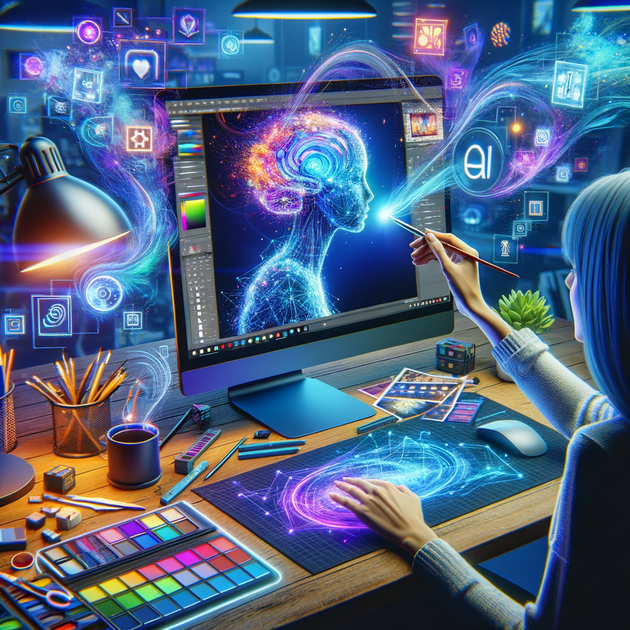How Adobe’s Firefly Model Transforms Photoshop: A Deep Dive into AI Integration
Imagine effortlessly editing photos with a few simple prompts, transforming your creativity into seamless visualizations. Adobe’s innovative Firefly model is now making this a reality by integrating powerful AI capabilities directly into Photoshop. Let’s delve into how this is revolutionizing the world of digital design.
The Evolution of Photoshop: Embracing AI
Since its inception, Photoshop has been the gold standard for digital photo editing. With Adobe’s recent integration of the Firefly model, it’s clear that AI is no longer the future — it’s the present. The Firefly model is designed to assist users by automating repetitive tasks, enhancing design elements, and even generating unique images based on textual descriptions.
What is the Firefly Model?
The Firefly model is Adobe’s proprietary AI technology that leverages machine learning and neural networks to understand and generate visual content. Think of it as a sophisticated algorithm that has been trained on thousands of images to learn and replicate artistic styles and patterns.
For example, imagine you’re tasked with creating a photo montage of a serene night scene. By typing a simple prompt such as “generate a calm night sky with stars,” the Firefly model instantly produces a high-quality image that matches your description.
Key Features of Firefly in Photoshop
The integration of Firefly into Photoshop introduces several game-changing features:
- Prompt-Based Image Generation: Users can type descriptions to generate images that fit their creative needs.
- Automated Object Selection: Firefly can intelligently select and isolate objects within an image, saving significant time and effort.
- Style Transfer: Apply the artistic style of one image to another with just a few clicks.
- Enhanced Content-Aware Fill: The upgraded tool fills in missing parts of an image with more precision and realism.
Real-World Applications
So, how does this translate to real-world applications? Here are a few scenarios where Firefly completely transforms the creative process:
Graphic Design and Marketing
Graphic designers can create stunning visuals in a fraction of the time it used to take. Marketing teams can instantly generate eye-catching advertisements based on simple descriptions. This not only streamlines workflow but also opens up new realms of creativity and innovation.
For instance, a marketing team aims to create a holiday campaign featuring a winter landscape. By typing “snowy mountain scene with festive lights,” Firefly generates several high-quality options, allowing the team to choose and customize the best fit for their campaign.
Film and Media Production
Film industry professionals can benefit from Firefly’s capabilities by generating background scenes or special effects that would otherwise require extensive manual work. This can dramatically cut down production time and costs.
Consider a filmmaker needing a dystopian cityscape for a sci-fi movie. Instead of commissioning a digital artist to create this from scratch, they can describe the scene and let Firefly generate it, refining the details as necessary.
AI and Ethical Considerations
While the advancements brought by Firefly are impressive, they also come with ethical considerations. The capabilities for image manipulation need strict guidelines to prevent misuse, such as creating deepfakes or altering images in deceiving ways.
Adobe is committed to ensuring that these tools are used responsibly by incorporating features that highlight AI-generated content and promote transparency.
The Future of AI in Creative Tools
Adobe’s Firefly model within Photoshop marks a significant milestone in AI integration within creative tools. It hints at a future where AI and human creativity work hand-in-hand to push the boundaries of what’s possible in digital design and beyond.
As AI continues to evolve, we can expect even more innovative applications that will further transform how we create and interact with digital content. For now, Adobe’s Firefly is a remarkable leap forward, empowering users with unprecedented capabilities.
Join the Conversation
What are your thoughts on the integration of AI in creative tools like Photoshop? How do you envision it impacting the future of digital design? We’d love to hear from you! Share your insights and join the conversation in the comments below.
